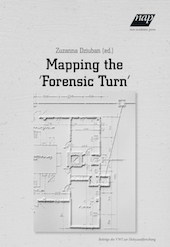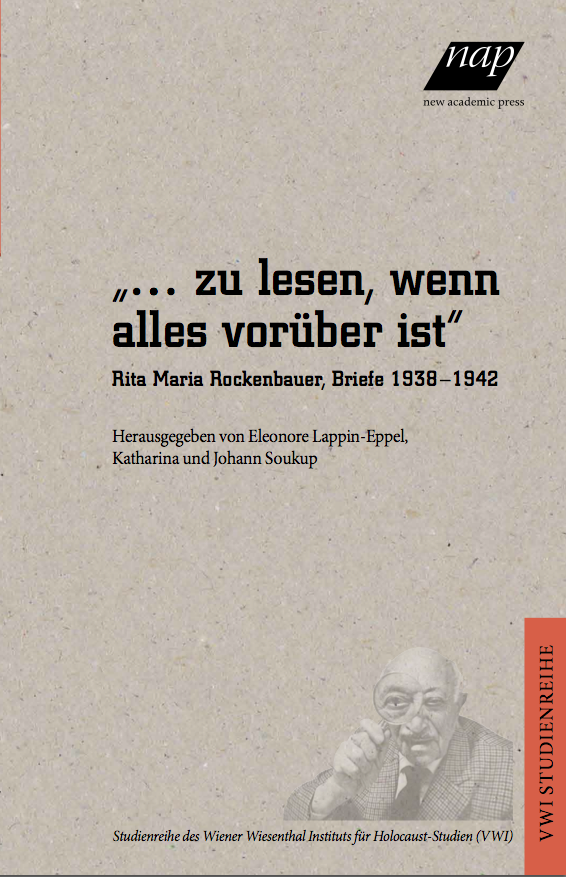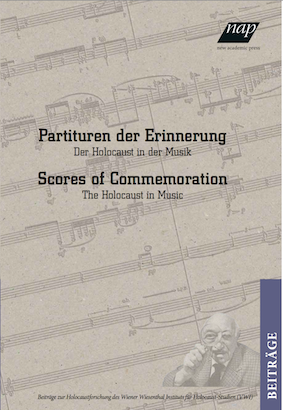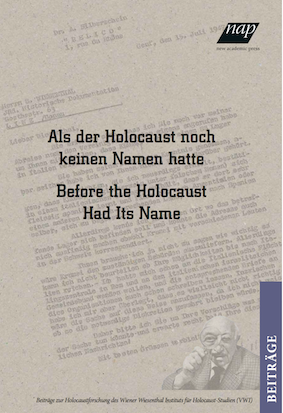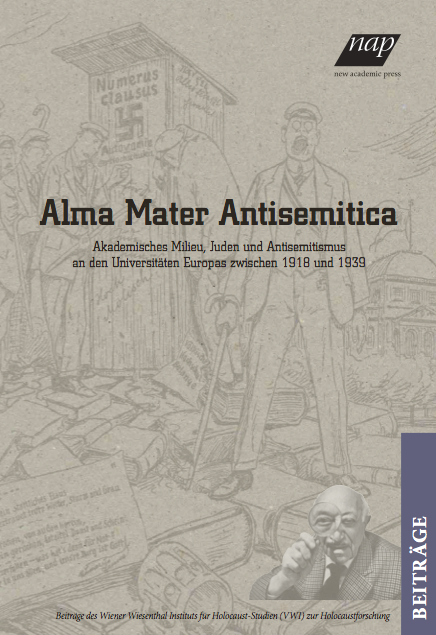 The region around Trieste forms a microcosm of the contradictory impulses that have defined Italian memory culture. The tension between commemoration and a rehabilitation of fascism is especially visible in two rival sites of memory: the Risiera di San Sabba, a former concentration camp, and the Foiba di Basovizza, which commemorates the victims of Yugoslav partisans. Both sites present an exculpatory version of Italian history that casts Italians as innocent victims of external aggression and glosses over the issues of collaboration and enforced Italianisation as well as the fascist policies of racial hygiene. A counterpoint to this dominant narrative may be found in the works of regional authors with Slovenian, Croatian and Jewish backgrounds. They bring repressed aspects of the region’s history and memory to recover the biographies of those who have been forgotten or excluded. Trieste is a paradigm case of „the historical uncanny“: a palimpsest of repressed memories that persistently reappear to disrupt and disturb the city and its historical self-image.
The region around Trieste forms a microcosm of the contradictory impulses that have defined Italian memory culture. The tension between commemoration and a rehabilitation of fascism is especially visible in two rival sites of memory: the Risiera di San Sabba, a former concentration camp, and the Foiba di Basovizza, which commemorates the victims of Yugoslav partisans. Both sites present an exculpatory version of Italian history that casts Italians as innocent victims of external aggression and glosses over the issues of collaboration and enforced Italianisation as well as the fascist policies of racial hygiene. A counterpoint to this dominant narrative may be found in the works of regional authors with Slovenian, Croatian and Jewish backgrounds. They bring repressed aspects of the region’s history and memory to recover the biographies of those who have been forgotten or excluded. Trieste is a paradigm case of „the historical uncanny“: a palimpsest of repressed memories that persistently reappear to disrupt and disturb the city and its historical self-image.
Editorial
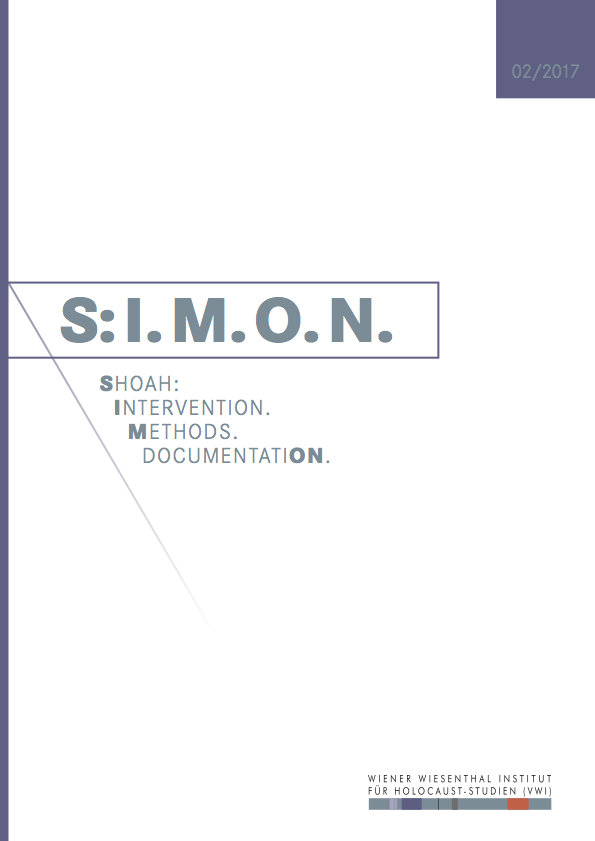 S:I.M.O.N. is an e-journal of the Vienna Wiesenthal Institute for Holocaust Studies (VWI). It appears twice a year in English and German language. S:I.M.O.N. aims at both a transnational and comparative history of the Holocaust and Jewish Studies in Central and Eastern Europe within the broader contexts of the European history of the 20th and 21st century, including its prehistory, consequences and legacies as well as the history of memory.
S:I.M.O.N. is an e-journal of the Vienna Wiesenthal Institute for Holocaust Studies (VWI). It appears twice a year in English and German language. S:I.M.O.N. aims at both a transnational and comparative history of the Holocaust and Jewish Studies in Central and Eastern Europe within the broader contexts of the European history of the 20th and 21st century, including its prehistory, consequences and legacies as well as the history of memory.
S:I.M.O.N. serves as a forum for discussion of various methodological approaches. The journal especially wishes to strengthen the exchange between researchers from different scientific communities and to integrate both the Jewish history and the history of the Holocaust into the different “national” narratives. It also lays a special emphasis on memory studies and the analysis of politics of memory. S:I.M.O.N. uses a double-blind review system, which means that both the reviewer’s and the author’s identities are concealed from each other hroughout the review process.
Shoah: The journal deals with the history of the Shoah from multidisciplinary, transnational and comparative perspectives. It seeks to integrate studies on Jews as well as on other groups of victims of the Holocaust, especially on Roma, and of so far less researched regions of (East) Central and (South) Eastern Europe.
Intervention. The journal reports on research projects and their transmission into public events. It also informs about current educational and remembrance programs.
Methods. The journal serves as a forum for the discussion of methodological approaches as, for instance, the everyday history, oral history, gender history, the history of violence, anti-Semitism and racism and the theory of memory and memory politics.
DocumentatiON. The journal contributes to critical approaches on using and interpreting archival materials in the 21st century.
Download the current issue S:I.M.O.N. 2017/2.
Articles
Miloslav Szabó
Auf dem Weg zum Holocaust? Der slowakische Antisemitismus in der Ersten Tschechoslowakischen Republik
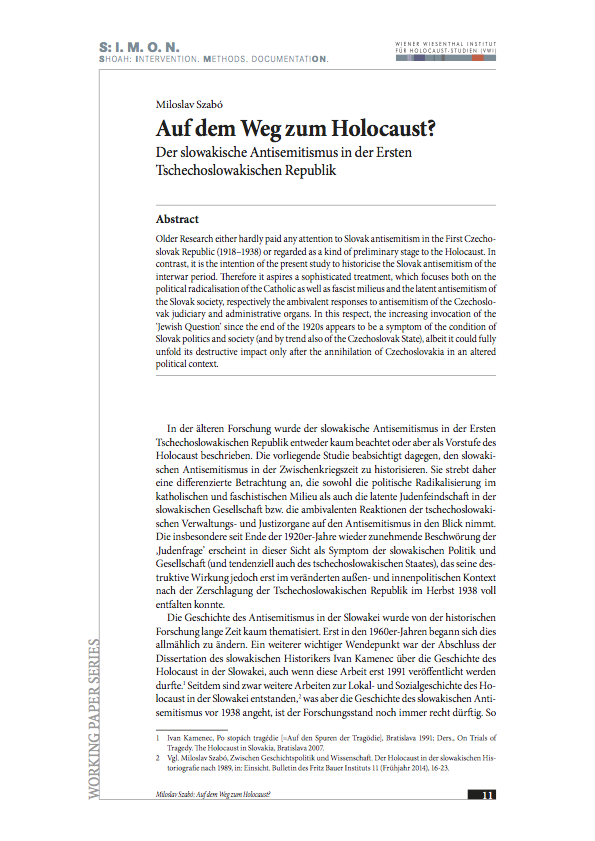 Older Research either hardly paid any attention to Slovak antisemitism in the First Czechoslovak Republic (1918–1938) or regarded as a kind of preliminary stage to the Holocaust. In contrast, it is the intention of the present study to historicise the Slovak antisemitism of the interwar period. Therefore it aspires a sophisticated treatment, which focuses both on the political radicalisation of the Catholic as well as fascist milieus and the latent antisemitism of the Slovak society, respectively the ambivalent responses to antisemitism of the Czechoslovak judiciary and administrative organs. In this respect, the increasing invocation of the 'Jewish Question' since the end of the 1920s appears to be a symptom of the condition of Slovak politics and society (and by trend also of the Czechoslovak State), albeit it could fully unfold its destructive impact only after the annihilation of Czechoslovakia in an altered political context.
Older Research either hardly paid any attention to Slovak antisemitism in the First Czechoslovak Republic (1918–1938) or regarded as a kind of preliminary stage to the Holocaust. In contrast, it is the intention of the present study to historicise the Slovak antisemitism of the interwar period. Therefore it aspires a sophisticated treatment, which focuses both on the political radicalisation of the Catholic as well as fascist milieus and the latent antisemitism of the Slovak society, respectively the ambivalent responses to antisemitism of the Czechoslovak judiciary and administrative organs. In this respect, the increasing invocation of the 'Jewish Question' since the end of the 1920s appears to be a symptom of the condition of Slovak politics and society (and by trend also of the Czechoslovak State), albeit it could fully unfold its destructive impact only after the annihilation of Czechoslovakia in an altered political context.
SWL-Reader
Marc Buggeln
Sklavenarbeit und Gewalt. Die KZ-Außenlager
 The detainees at the subcamps of Neuengamme concentration camp near Hamburg lived and worked under a broad range of conditions. Although the first two subcamps were established as early on as in 1941/1942, it was not until 1944 that all of northern Germany was covered. The Neuengamme concentration camp had more than 85 subcamps, to which the SS had brought about 40,000 detainees as slave workers for the German war effort by the end of 1944. Marc Buggeln has compared the subcamps and evaluated the significance of a range of factors such as labour conditions, racism and gender differences with regard to the concentration camp inmates' likelihood of survival. In this way, he was able to disprove some central assumptions made by concentration camp research to date, or at least to seriously curtail the general validity that had been ascribed to them. Finally, he describes the conditions for the perpetrators as well as the victims at hand of a selection of biographies.
The detainees at the subcamps of Neuengamme concentration camp near Hamburg lived and worked under a broad range of conditions. Although the first two subcamps were established as early on as in 1941/1942, it was not until 1944 that all of northern Germany was covered. The Neuengamme concentration camp had more than 85 subcamps, to which the SS had brought about 40,000 detainees as slave workers for the German war effort by the end of 1944. Marc Buggeln has compared the subcamps and evaluated the significance of a range of factors such as labour conditions, racism and gender differences with regard to the concentration camp inmates' likelihood of survival. In this way, he was able to disprove some central assumptions made by concentration camp research to date, or at least to seriously curtail the general validity that had been ascribed to them. Finally, he describes the conditions for the perpetrators as well as the victims at hand of a selection of biographies.
Events
Zoltán Halasi
Duschehubka
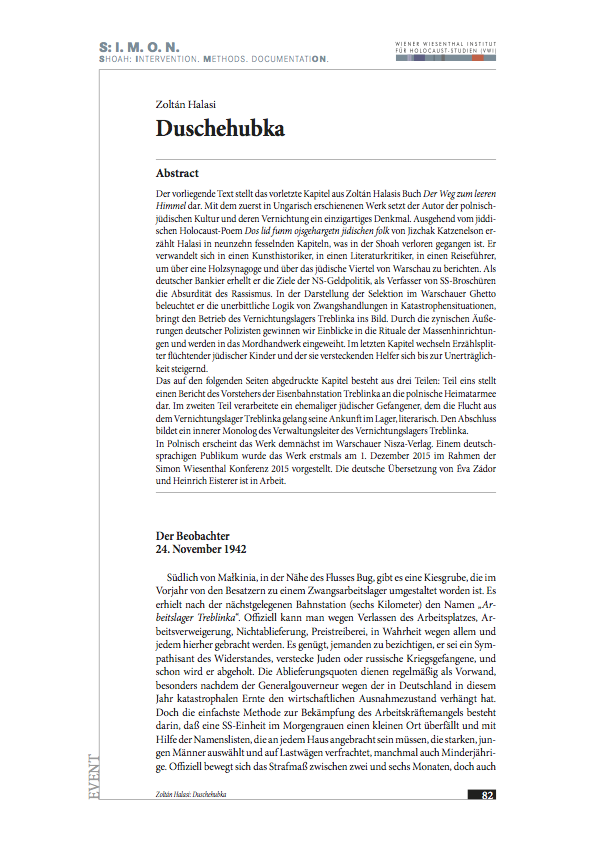 This text is the penultimate chapter of Zoltán Halasi's book Út az üres éghez (Road to an Empty Sky). With this work, which was first published in Hungarian, the author created a singular memorial to Polish-Jewish culture and its destruction. Setting out from the Yiddish Holocaust poem Dos lid funm ojsgehargetn jidischen folk by Itzhak Katzenelson, Halasi records what was lost in the Shoah in the course of nineteen compelling chapters. He takes on the grab of an art historian, a literary critic and a travel guide when he reports about a wooden synagogue and the Jewish quarter in Warsaw. In the role of a German banker, he illuminates the aims of the Nazi monetary policies, as a writer of SS brochures he highlights the absurdity of racism. Depicting a Selektion in the Warsaw ghetto, he shows the grim logic of compulsive acts in catastrophic situations, draws an image of the running of the extermination camp Treblinka. The cynical words of two German policemen provide an insight into the rituals of mass executions and introduce us to the craft of murder. The final chapter is an interplay of slithers of narrative by Jewish children on the run and by those who helped and hid them that borders on the unbearable.
This text is the penultimate chapter of Zoltán Halasi's book Út az üres éghez (Road to an Empty Sky). With this work, which was first published in Hungarian, the author created a singular memorial to Polish-Jewish culture and its destruction. Setting out from the Yiddish Holocaust poem Dos lid funm ojsgehargetn jidischen folk by Itzhak Katzenelson, Halasi records what was lost in the Shoah in the course of nineteen compelling chapters. He takes on the grab of an art historian, a literary critic and a travel guide when he reports about a wooden synagogue and the Jewish quarter in Warsaw. In the role of a German banker, he illuminates the aims of the Nazi monetary policies, as a writer of SS brochures he highlights the absurdity of racism. Depicting a Selektion in the Warsaw ghetto, he shows the grim logic of compulsive acts in catastrophic situations, draws an image of the running of the extermination camp Treblinka. The cynical words of two German policemen provide an insight into the rituals of mass executions and introduce us to the craft of murder. The final chapter is an interplay of slithers of narrative by Jewish children on the run and by those who helped and hid them that borders on the unbearable.
The chapter reproduced on the following pages has three parts: Part one is a Treblinka railway station master's report to the Polish Home Army. In the second part, a former Jewish detainee who managed to escape from the extermination camp Treblinka gives a literary treatment of his arrival at the camp. The final part consists of an inner monologue by the Treblinka extermination camp's director of administration.
The book will shortly be published in Polish at the Nisza publishing company in Warsaw. The German-speaking public was first presented with the work on December 1, 2015 at the Simon Wiesenthal Conference 2015. The German translation by Éva Zádor and Heinrich Eisterer is in progress.
Susanne C. Knittel: Unheimliche Heimat. Triest als Erinnerungsraum
„... zu lesen, wenn alles vorüber ist“
Rita Maria Rockenbauer, Briefe 1938 –1942
Wien 2014
Partituren der Erinnerung.
Der Holocaust in der Musik
Scores of Commemoration.
The Holocaust in Music
Wien 2015
Before the Holocaust Had Its Name. Early Confrontations of the Nazi Mass Murder of the Jews
Wien 2016
Akademisches Milieu, Juden und Antisemitismus an den Universitäten Europas zwischen 1918 und 1939
Academic Milieu, Jews and Antisemitism at European Universities between 1918 and 1939
Wien 2016


